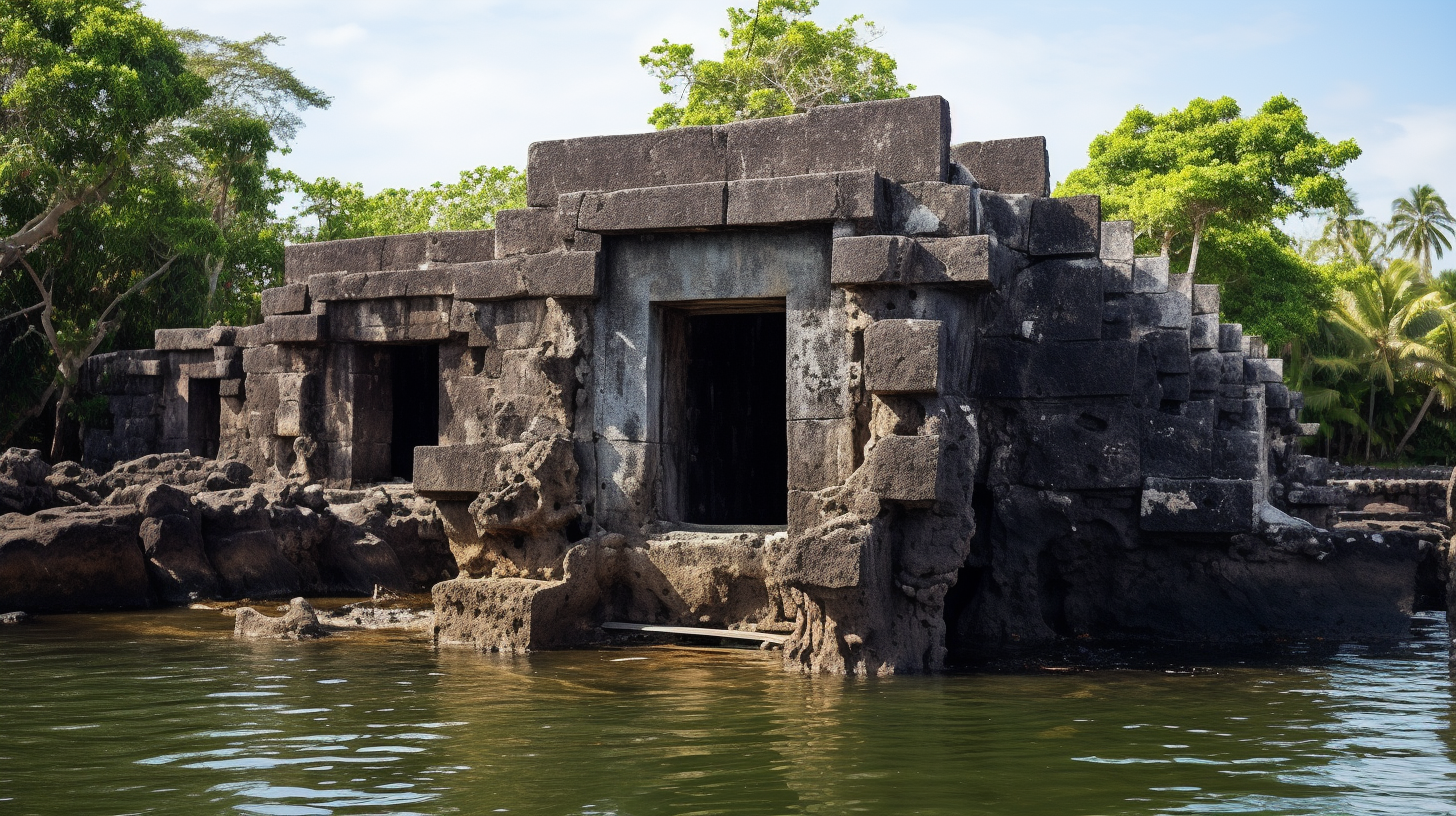Introduction
Situated on the secluded Ponape Island in Micronesia, Nan Madol has captivated historians, archaeologists, and now, proponents of ancient astronaut theories. This enigmatic megalithic complex, often referred to as the “Eighth Wonder of the World,” has puzzled scholars for generations with its vast basalt walls, man-made islands, and elaborate architecture. A recent lidar survey in 2019 uncovered a remarkable find – a sophisticated irrigation system on Tenuan Island linked to Nan Madol. This revelation challenges established hypotheses and sparks inquiries into the true genesis of this mysterious site.
Revelation through Lidar Technology
The conclusion of a groundbreaking six-month project in September 2019, funded by the U.S. Department of State’s Ambassadors Fund for Cultural Preservation, marked a turning point. By utilizing lidar technology, scientists generated a 3D model of Nan Madol and its vicinity, unveiling an intricately designed irrigation network on Tenuan Island. This revelation contradicted the traditional assumption that the inhabitants of Nan Madol relied on external sources for sustenance.
The attribution of Nan Madol’s creation to the Saudeleurs, the ruling dynasty of the region, has been a longstanding viewpoint. However, local oral traditions present a conflicting narrative, adding complexity to the site’s history. The findings of the lidar survey have reignited debates about the true architects of Nan Madol, prompting a reevaluation of the prevailing Saudeleur theory.

An Expedition Unveiling the Enigma
Fascinated by the lidar survey outcomes, ancient astronaut proponents Giorgio Tsoukalos and David Childress undertook an expedition to Nan Madol in September 2019. Their objective: to delve deeper into the enigmas surrounding this ancient marvel.
Upon their arrival in Micronesia, they rendezvoused with Gus Kohler, the National Historic Preservation Officer, who would act as their guide to Nan Madol. Setting sail towards the site, David Childress expressed his anticipation, having visited Nan Madol on four previous occasions. He lauded Nan Madol as one of the most extraordinary megalithic complexes he had ever encountered, despite its limited recognition in mainstream archaeological circles.
Unconventional Challenges to Established Theories
Centuries-old queries persist regarding the transportation and assembly of the colossal basalt blocks at Nan Madol. While conventional scholars propose bamboo rafts as the mode of conveyance, Gus Kohler vehemently opposes this notion. Numerous attempts to replicate this method with smaller one-ton basalt blocks have ended fruitlessly, casting doubt on its feasibility. Even a televised documentary from 1995 struggled to showcase the viability of such a technique.
Arriving at Nan Madol, David and Giorgio gazed in awe at the massive basalt walls and artificial islands constituting the site. The sheer magnitude of the construction is staggering, leading David to speculate that Nan Madol might predate mainstream archaeological estimates by millennia.
Exploring Extraterrestrial Hypotheses
Rufino Mauricio, the director of the Federated States of Micronesia Office of National Archives, is among those open to unconventional conjectures regarding Nan Madol’s origins. He posits that the existence of the site opens intriguing avenues, including potential extraterrestrial influences.
The notion of alien involvement is a realm that Giorgio and David are keen to delve into further. They are eager to scrutinize the intricate intricacies of Nan Madol’s perplexing construction and unlock the mysteries shrouding this ancient riddle.
Video:
Conclusion
Nan Madol endures as a captivating enigma challenging our comprehension of ancient engineering and historical narratives. The recent lidar survey revealing a sophisticated irrigation system casts doubt on established notions about the site’s constructors. Giorgio Tsoukalos and David Childress’s expedition to Nan Madol marks a significant stride towards unraveling the truth behind this ancient marvel, be it a result of ingenious human craftsmanship or possibly something more extraterrestrial. As investigations persist, Nan Madol stands as a testament to the perpetual allure of ancient mysteries and humanity’s unrelenting quest for enlightenment.
